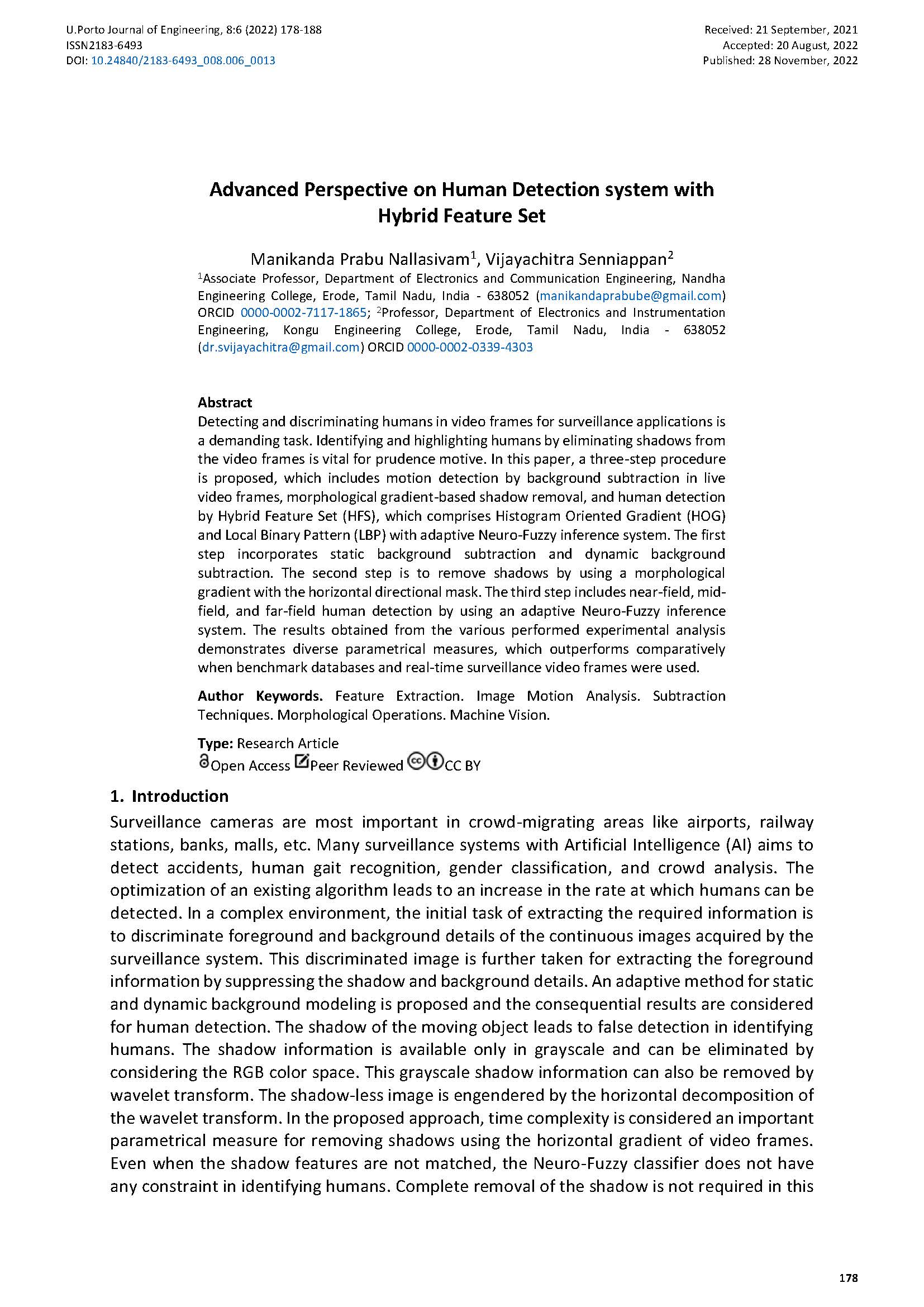Advanced Perspective on Human Detection system with Hybrid Feature Set
Main Article Content
Abstract
Detecting and discriminating humans in video frames for surveillance applications is a demanding task. Identifying and highlighting humans by eliminating shadows from the video frames is vital for prudence motive. In this paper, a three-step procedure is proposed, which includes motion detection by background subtraction in live video frames, morphological gradient-based shadow removal, and human detection by Hybrid Feature Set (HFS), which comprises Histogram Oriented Gradient (HOG) and Local Binary Pattern (LBP) with adaptive Neuro-Fuzzy inference system. The first step incorporates static background subtraction and dynamic background subtraction. The second step is to remove shadows by using a morphological gradient with the horizontal directional mask. The third step includes near-field, mid-field, and far-field human detection by using an adaptive Neuro-Fuzzy inference system. The results obtained from the various performed experimental analysis demonstrates diverse parametrical measures, which outperforms comparatively when benchmark databases and real-time surveillance video frames were used.
Downloads
Article Details

This work is licensed under a Creative Commons Attribution 4.0 International License.
Authors who publish with this journal agree to the following terms:
- Authors retain copyright and grant the journal right of first publication with the work simultaneously licensed under a Creative Commons Attribution License that allows others to share the work with an acknowledgement of the work's authorship and initial publication in this journal.
- Authors grant the journal the rights to provide the article in all forms and media so the article can be used on the latest technology even after publication and ensure its long-term preservation.
- Authors are able to enter into separate, additional contractual arrangements for the non-exclusive distribution of the journal's published version of the work (e.g., post it to an institutional repository or publish it in a book), with an acknowledgement of its initial publication in this journal.
- Authors are permitted and encouraged to post their work online (e.g., in institutional repositories or on their website) prior to and during the submission process, as it can lead to productive exchanges, as well as earlier and greater citation of published work (See The Effect of Open Access).

